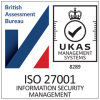One of the greatest frustrations for any client is being repeatedly asked to provide the same information by different people, in different departments (e.g. sales and compliance), at different stages of the client lifecycle.
It’s one thing to ask a client whether their email address is still valid; this demonstrates a desire to remain current and connected. But when that question becomes “what is your email? We don’t have one on file,” that conveys incompetence when you’ve asked for it previously, maybe even several times.
What happens when data capture goes wrong?
Repeated requests waste everyone’s time, lead to poor data quality and mistakes, and can easily sour a client relationship. Clients may wonder how diligently you are protecting their data, in line with regulatory requirements; did you lose it, or is it that your systems are unconnected?
Duplicate data capture usually arises when relationship managers need to log into many different systems to gain complete visibility of a client’s book of record. While the data may be captured and recorded in one system, it isn’t synced across all.
When duplicate data collection shakes a client’s trust in your data protection practices, it also raises questions about how appropriately you are handling their affairs in general. Worse still, it can call into question the accuracy and validity of the advice you provide.
This is a relatively easy aspect of client lifecycle management to fix, as long as you have technology in place to eliminate data silos and connect systems and processes together, to support downstream data exchange.
What wealth managers need to know
According to a Hubbis report, building a greater understanding of clients is the #1 priority for relationship managers. From the very first touchpoint, data must be captured and maintained effectively, to fuel data-driven insights and ensure successful client relationships.
“From the very first touchpoint, data must be captured and maintained effectively, to fuel data-driven insights and ensure successful client relationships.”
It is crucial to understand that:
- Accurate data is needed to satisfy client requirements. Periodic data verification is both necessary and acceptable, but updates must be shared and visible across the organisation.
- Data silos increase duplication, are harmful and cannot support end-to-end client lifecycle management – or encourage client retention.
- Digitisation and automation prevent duplicate data capture. Technology is also needed to leverage data more effectively throughout the client lifecycle – to provide next best recommendations, increase returns and ensure client satisfaction.
How to eliminate friction from data capture processes
Case management of all kinds – from a simple address change to a complaint or complex onboarding process – involves data capture. Data capture is a repeatable process that benefits from automation and humans have little value to add, beyond clarifying client queries as they arise.
Key to successful data capture are:
- Digital self-service. Increasingly, wealth managers are investing in client portals that allow (indeed encourage) self-service data entry, to ensure the correct information is captured in the right form, at the right time. Access to self-service online portals enables clients to enter data at their own convenience, just once, in an accurate and compliant form.
- Automated data sharing. Through automation, data captured at any stage of the client lifecycle is visible and re-used across all related systems and processes; the most up-todate information is available to all stakeholders, regardless of their role or function. The need to request the same data twice should never arise, beyond periodic verification.
- Value creation, through data enrichment and analysis. Data captured throughout the client lifecycle can be enriched and analysed using AI, then presented automatically to relationship managers at the right time, to guide timely and profitable next best recommendations.
To avoid frustrating clients with duplicate data requests – sometimes very early in the sales cycle before onboarding – wealth managers must use technology to manage data capture in a more effective and less duplicitous way. In turn, this will increase client satisfaction (and revenues) in both the short and long term.
This article is an extract from our e-book 6 ways wealth managers can convert interactions into trusted client relationships. Download the full e-book via the button below.





